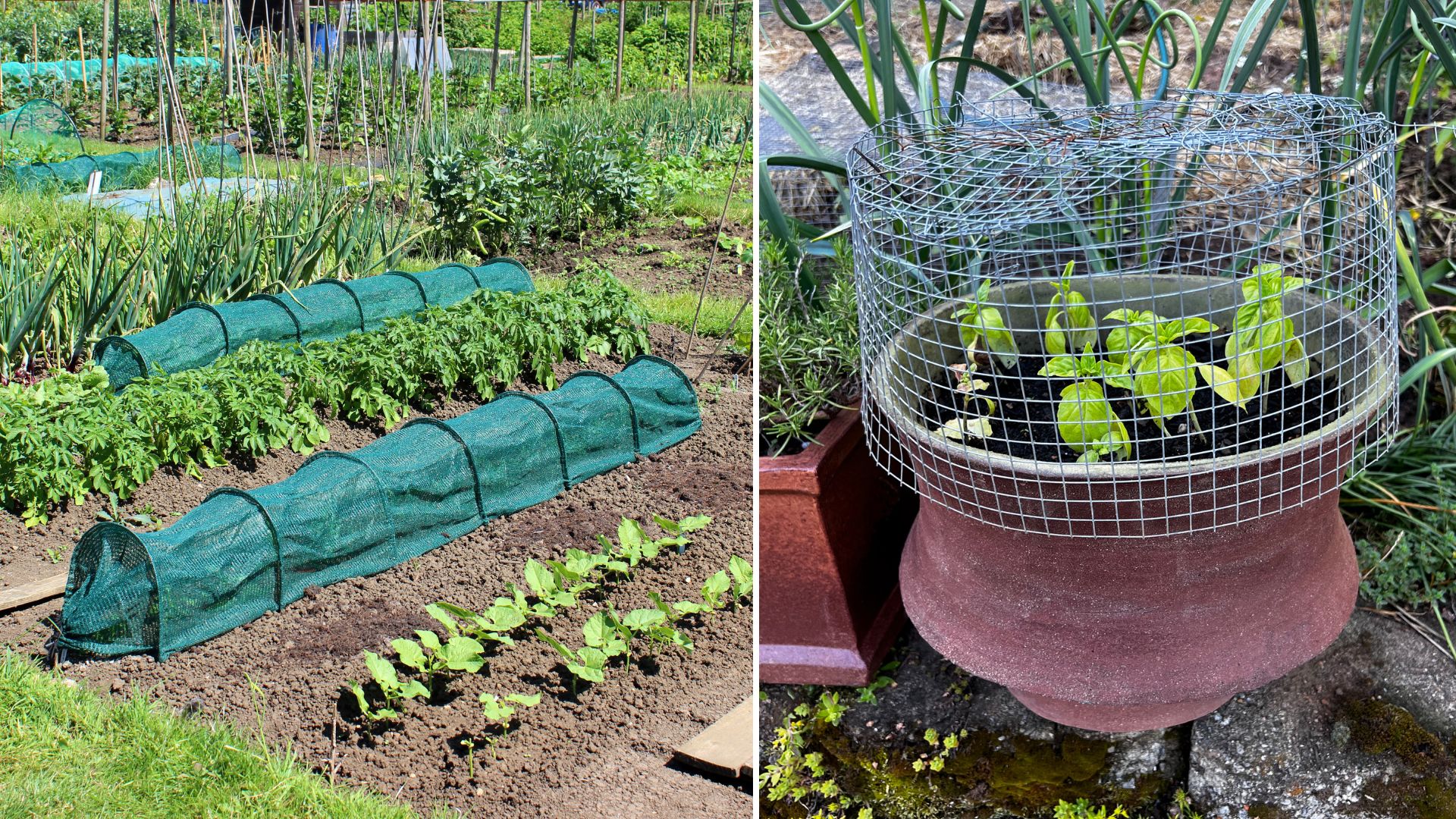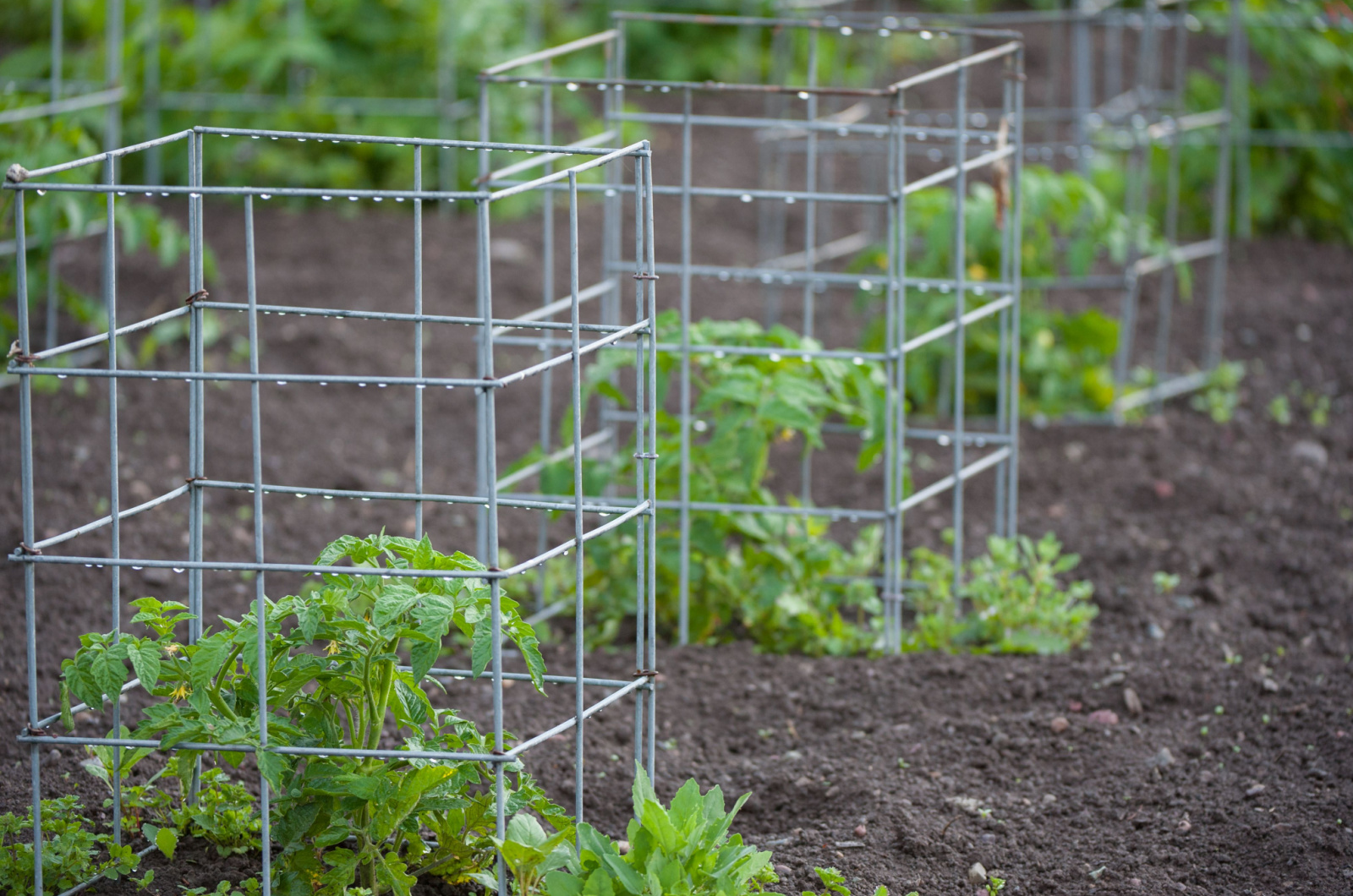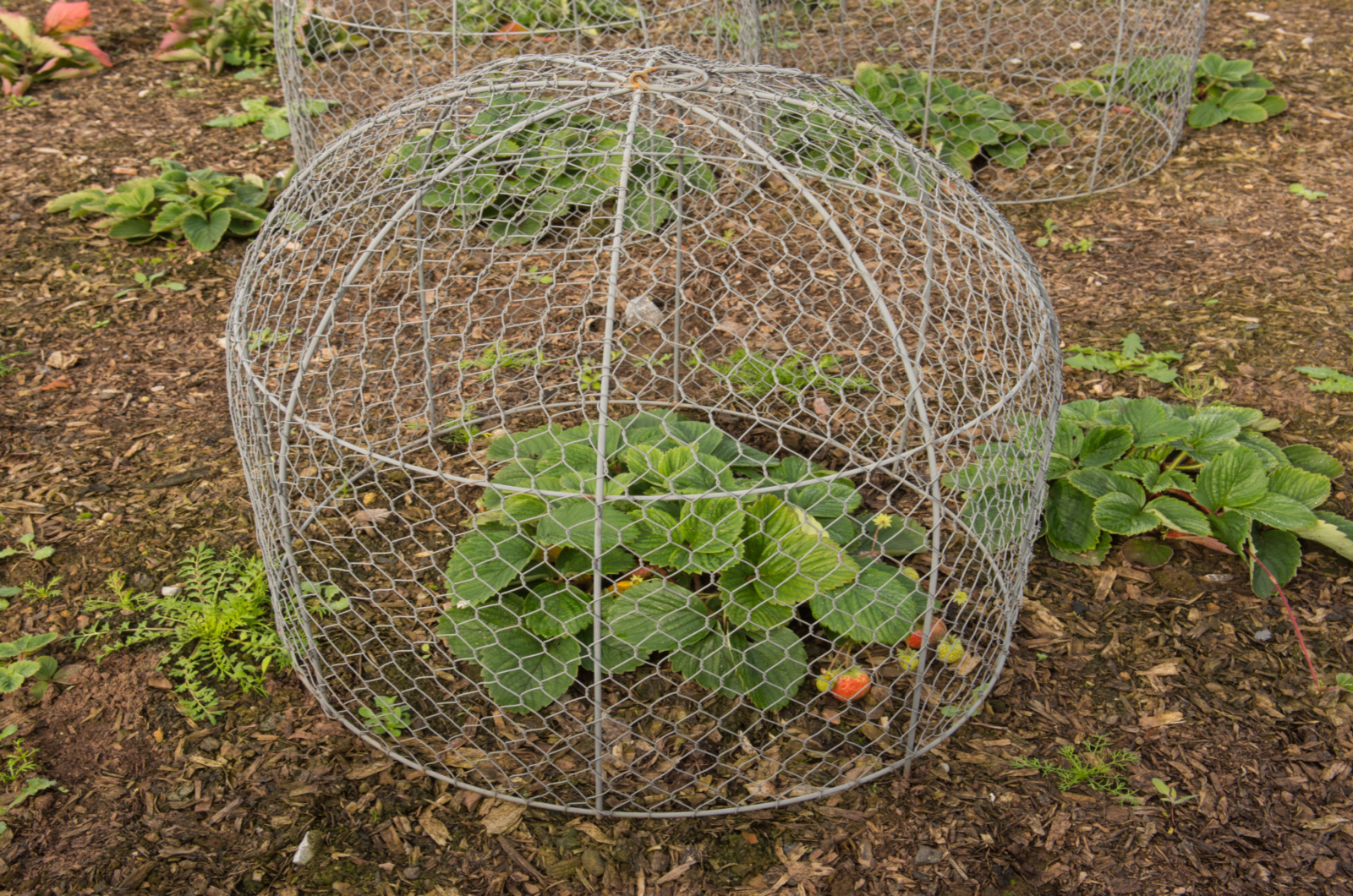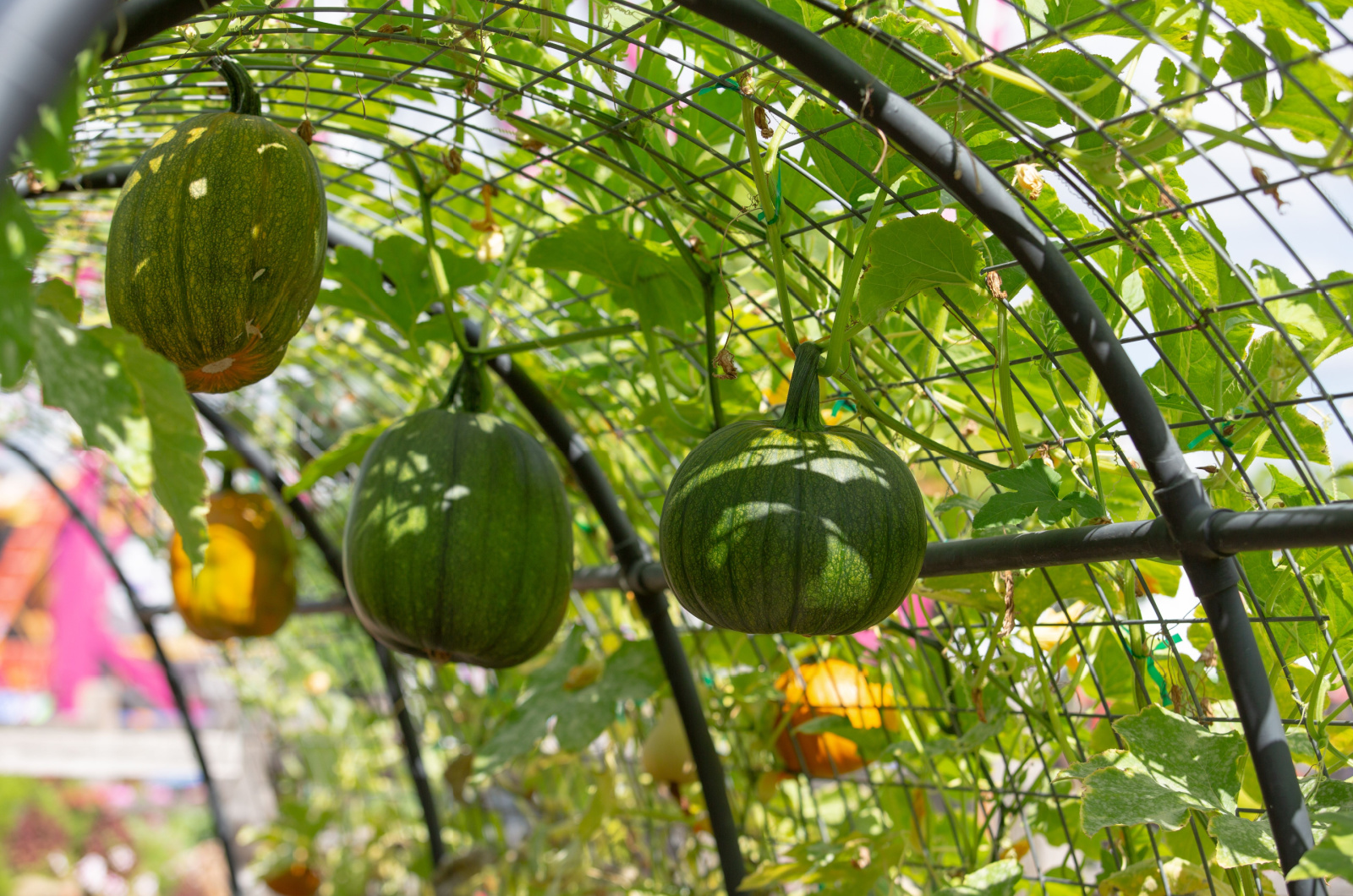It is disappointing when you spot your newly transplanted seedlings devoured by animals or pests. These sensitive plants are also vulnerable to temperature changes when transplanted outdoors, which is why you have to protect them at all costs.
Let me introduce you to cloches and critter cages – two invaluable tools that offer a seamless and effective way to nurture and protect your garden.
While you can use fences and floating row covers, cloches and critter cages are ideal for small gardens with limited space. These can shield delicate seedlings and extend your growing season, and also deter unwanted visitors such as squirrels and rabbits.
In this article, we are going to talk more about cloches and critter cages, and how to properly use them. Stay tuned!
What Are Cloches And Critter Cages?
Let’s talk about cloches first. These are covers that completely enclose your young plants or seedlings to protect them from cool weather, herbivores, pests, and insects. They come in various materials, such as glass, plastic, or even fabric.
Cloches act like a miniature greenhouse for young plants, creating a favorable microclimate for their growth. They can be about 12 to 18 inches tall, and dome- or bell-shaped.
They are particularly valuable in extending the growing season, providing frost protection, and encouraging early plant development.
Critter cages are small wire cages that are designed to keep unwanted critters and pests away from plants. These cages act as a barrier between your precious plants and potential threats like rabbits, squirrels, birds, and insects. They also completely surround the plants.
These cages come in various shapes and sizes, but are also usually from 12 to 18 inches tall. Rounded cylindrical and dome-shaped cages with rust-proof wire mesh are most commonly used.
Both cloches and critter cages are very useful tools that can be used in many different ways to make your garden a happy and safe place for your plants to grow!
Benefits Of Cloches And Critter Cages
Although we have already mentioned some of the benefits that come with using cloches and critter cages, there are still others that are definitely worth mentioning.
Let’s dive in!
Protecting The Seeds
When you sow plant seeds in the ground, there is a possibility that some squirrels will dig them up and eat them. This also applies to birds if you didn’t sow them deep enough in the soil.
So, to protect your seeds from critters and harsh weather conditions, you can cover them with cloches. They will also keep the seeds a bit warmer, allowing them to germinate successfully.
If you have issues with squirrels in your garden, you can plant certain plants that deter squirrels.
Deer And Rabbits Can’t Reach Your Plants
Younger plants and herbivore-favored plants can be completely devoured by deer and rabbits. If you live in a region where these critters are prevalent, it can be somewhat tricky to keep them away from your garden plants.
Besides growing deer-repellent plants, you can consider using cloches and critter cages to protect your precious plants. However, this only works with smaller plants or plants that have just started growing.
If you are growing hostas, for instance, they are most likely going to get eaten if you don’t find a solution to keep deer and rabbits away.
Preventing Pests
Pests are all gardeners’ nightmare. A wide range of garden pests, including insects, birds, and small mammals can completely ruin your plants. Insects like leaves, rabbits like young seedlings, and mammalian pests can eat your plants in one bite.
To protect your plants from insects, consider covering them with cloches since they completely cover them. Both critter cages and cloches can be used for smaller plants to protect them from mammalian pests.
Birds usually don’t attack younger plants – they like to munch on fruits produced by mature plants. However, you can use cloches and cages for smaller plants such as strawberries.
Weather Protection
Wind, snow, rain, and low temperatures can affect your plants’ health. If you are growing rather sensitive plants, you should find a way to protect them, especially if you live in a region with unpredictable weather.
Cloches shield plants from adverse weather conditions, such as frost, strong winds, heavy rains, and extreme temperatures. They create a microclimate around the plants, trapping warmth and providing insulation.
You can use them during any season:
• Spring – use cloches to protect young transplants from frost and overnight cold. Both cloches and cages protect the seedlings from hungry critters.
• Summer – use a critter cage to protect your younger plants if you started summer seedlings or have late transplants. Cloches should be avoided because temperatures are quite high.
• Fall – use both cages and cloches to protect your fall seedlings from predators and changing temperatures. This is also a perfect time to clean your gardening gear and store it for the winter.
• Winter – if you live in warmer climates, you can still have a gardening season during winter. Use cloches to protect your plants from cold weather and critter cages for browsing herbivores (even though they are not as active).
How And When To Use Cloches And Critter Cages
Now that we have covered the benefits, let’s see how to actually use cloches and critter cages.
When?
We have already mentioned that you can use them during any season. However, they are most commonly used in early spring when you are dealing with new transplants that can be damaged by sudden temperature drops and critters.
You can also use cloches to extend the growing season – as the season comes to an end in fall, cloches can help extend it by providing protection from cooler temperatures. This allows you to continue growing certain plants for a bit longer, even in colder weather.
How?
Cloches come in various materials and styles, such as glass, plastic, or fabric. Select the one that suits your garden’s needs best. For instance, glass cloches provide excellent heat retention, while fabric cloches are lightweight and easier to handle.
Use critter cages made of durable materials like wire mesh or netting – these can withstand outdoor conditions and keep your plants safe from persistent pests. Make sure that they are well-anchored to the ground so animals can’t knock them over.
If you want more information about using cloches, check out this video: How to use cloches
Limitations Of Cloches And Critter Cages
Even though there are numerous benefits that come with cloches and critter cages, there are still some limitations.
• Pollination issues – covered plants won’t be pollinated properly. However, most younger plants outgrow cloches before flowering so that pollinators can access them easily.
• Some critters still find a way – burrowing animals such as moles travel through tunnels in the soil so neither a cage nor a cloche can protect your plants from these kinds of critters. Consider using a raised bed with a protective mesh instead.
• Plants can still be cold – cloches can protect your plants from a bit of colder weather during spring and mild winters. Still, they can not offer protection from severely cold winters where temperatures drop below freezing all the time.
• Water issues – cloches are enclosed structures so rain can’t reach your plants. Make sure to do some additional watering and keep the soil in cloches evenly moist.
• Small size – cloches and cages can’t be used for full-sized garden plants. To protect these kinds of plants, you can use a hardware cloth wrap or some chicken wire. • Greenhouse effect – using cloches for cold weather protection is a good thing. However, they are not suitable for usage during hot summer days as they can mimic the oven effect and create an environment that is too hot for your plants. Use a critter cage during the warmer months.




